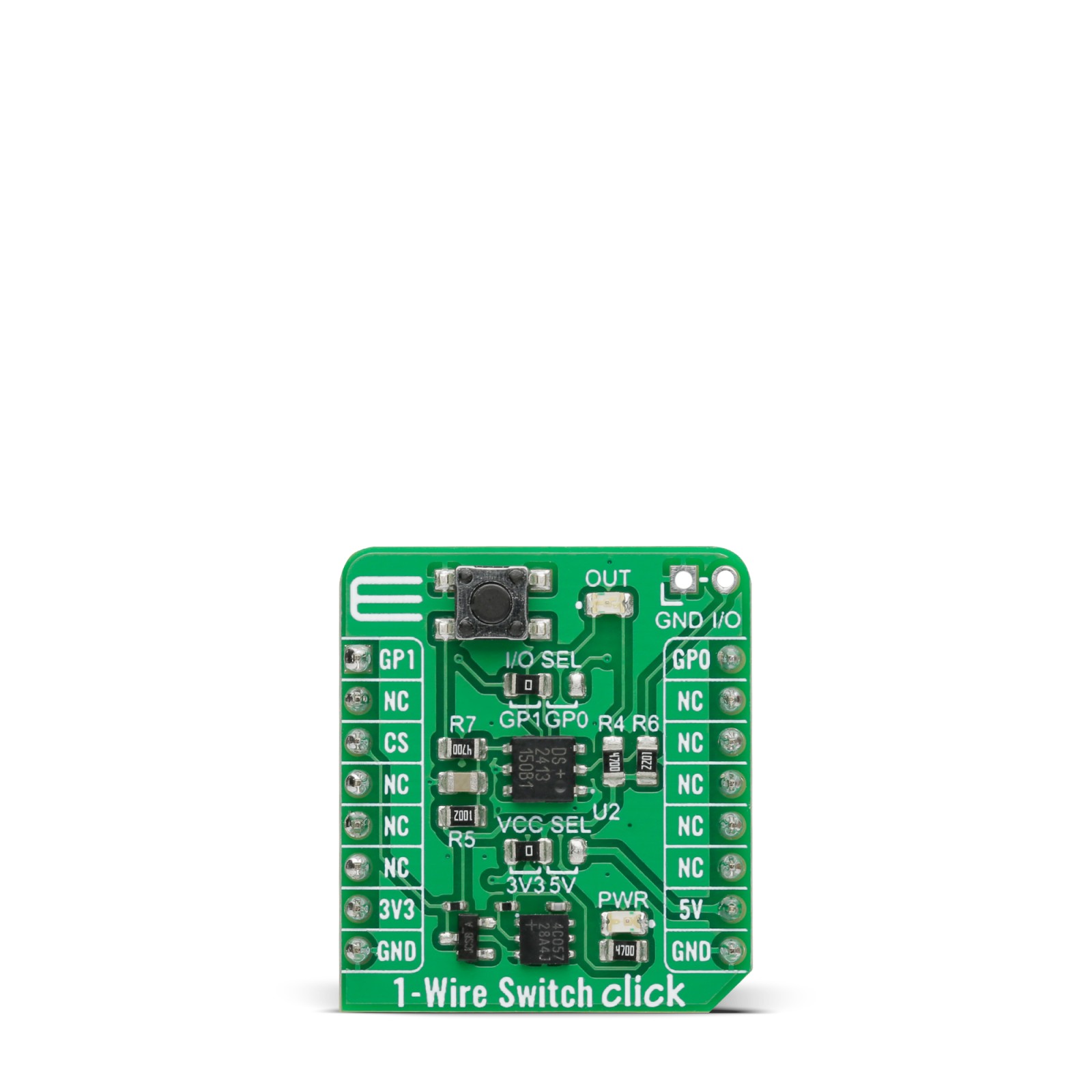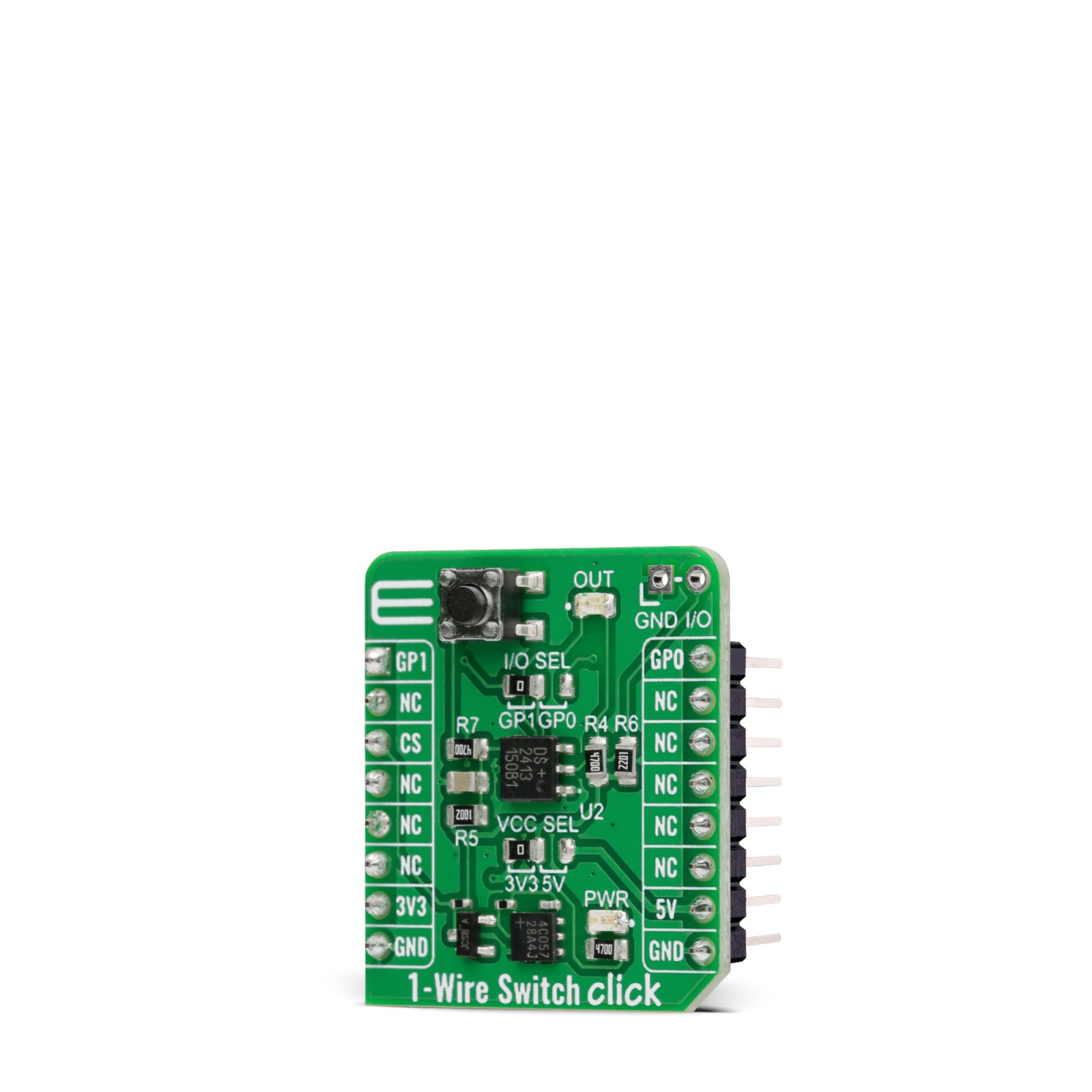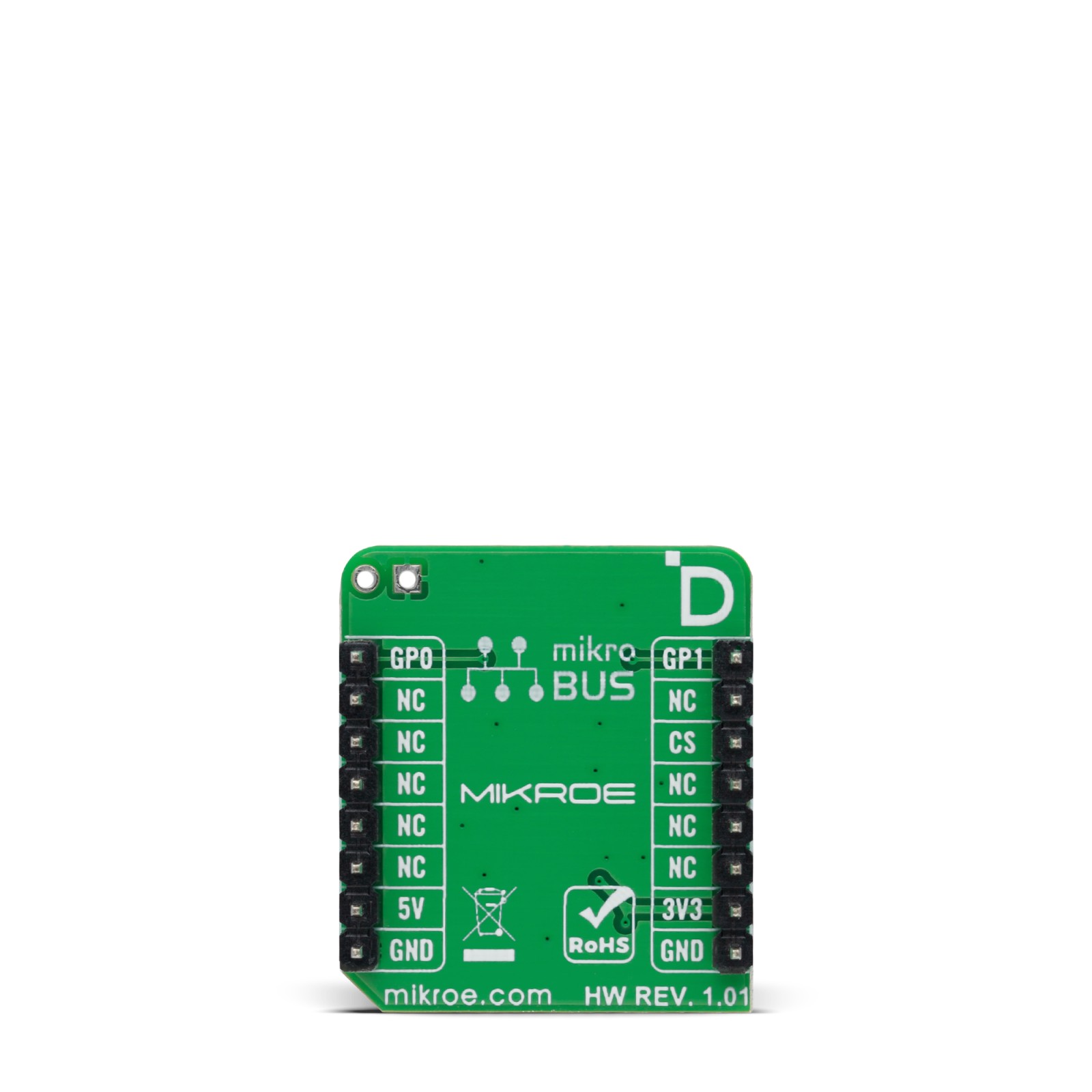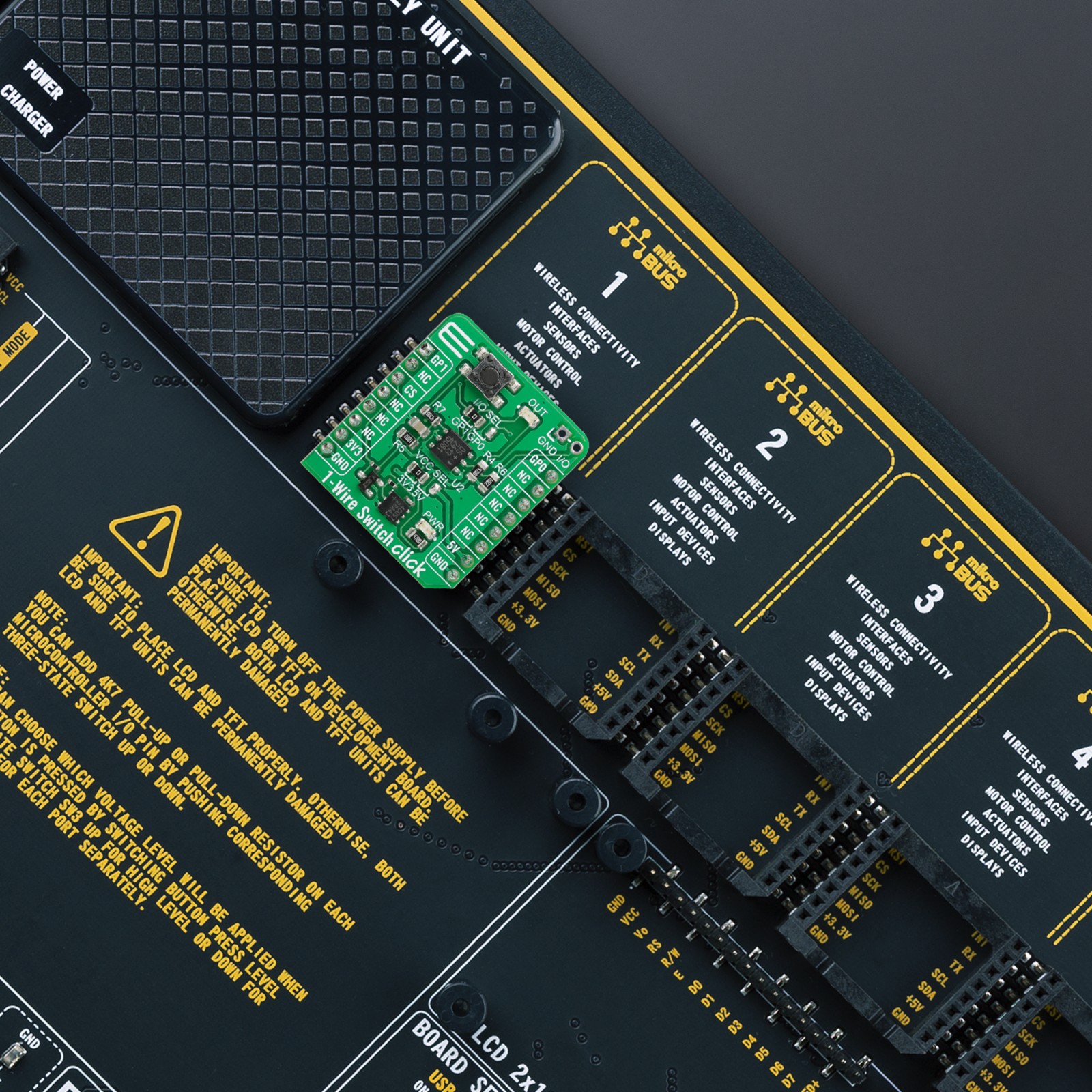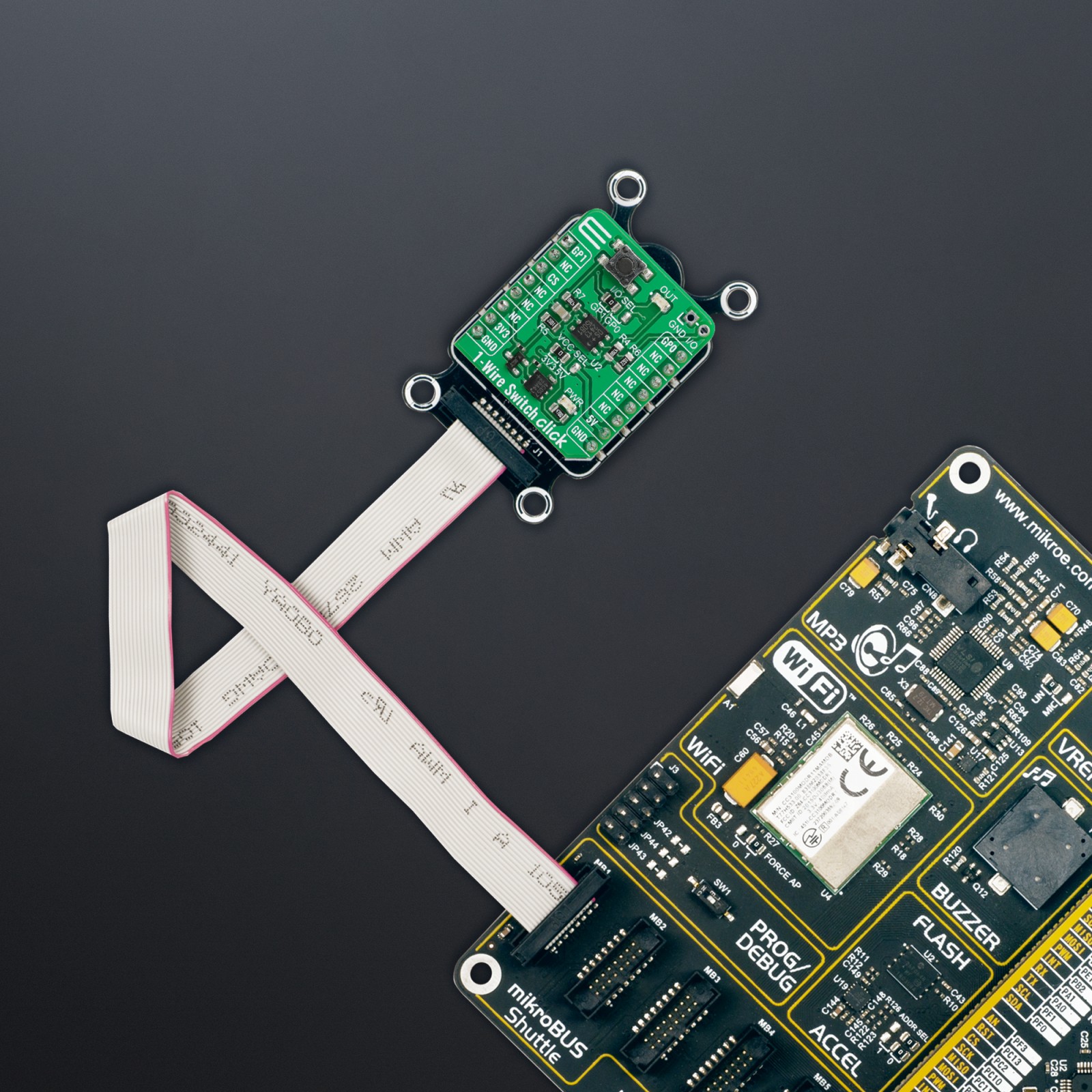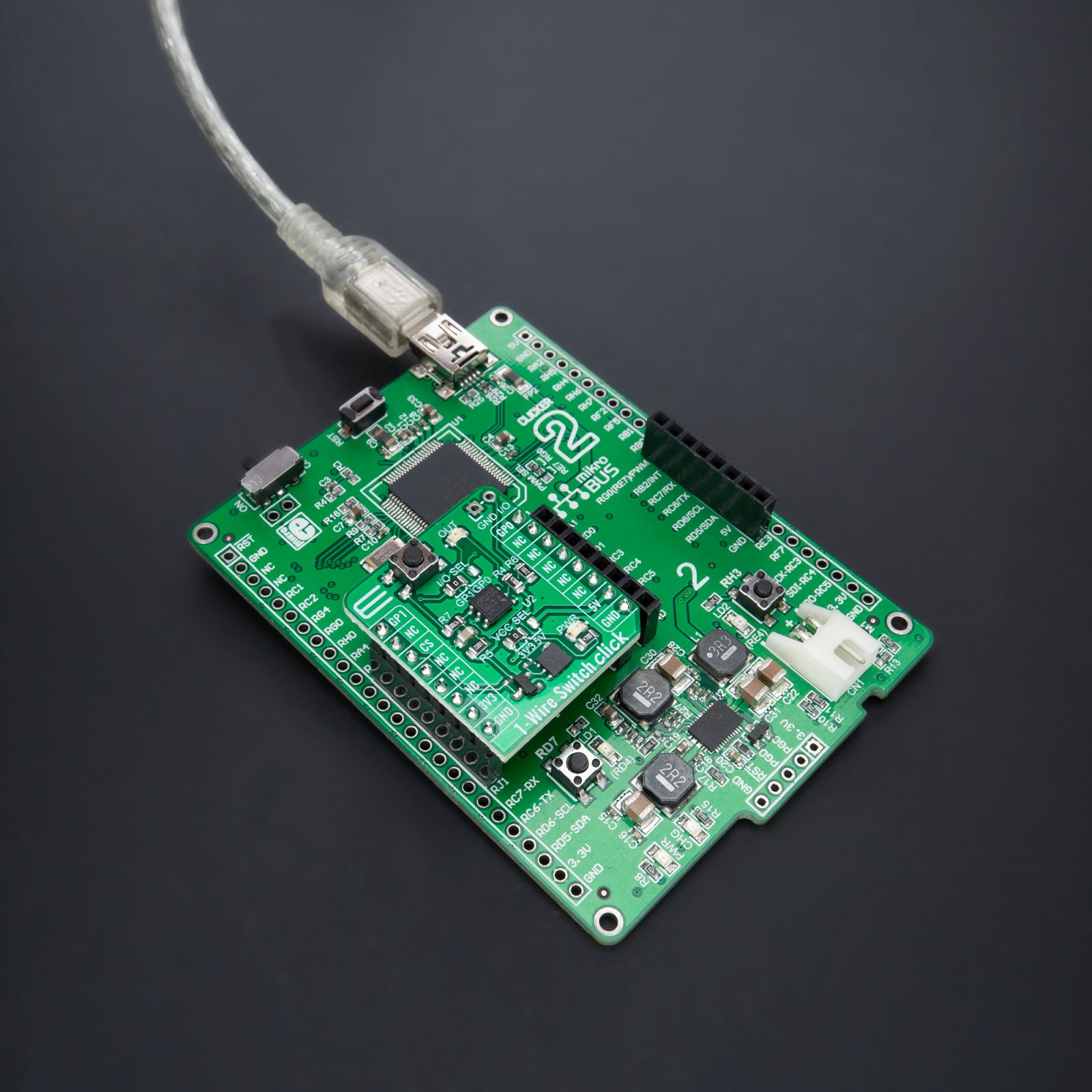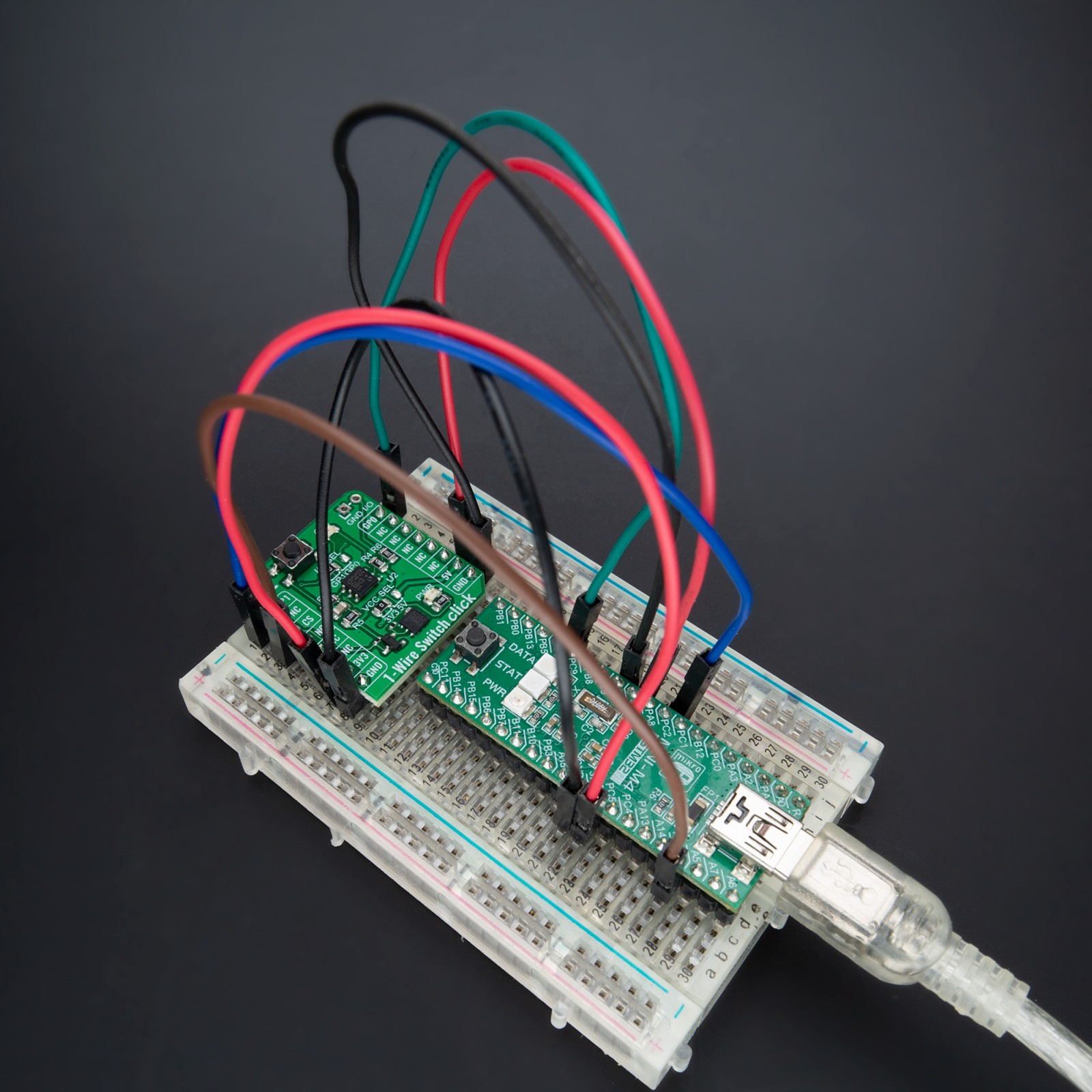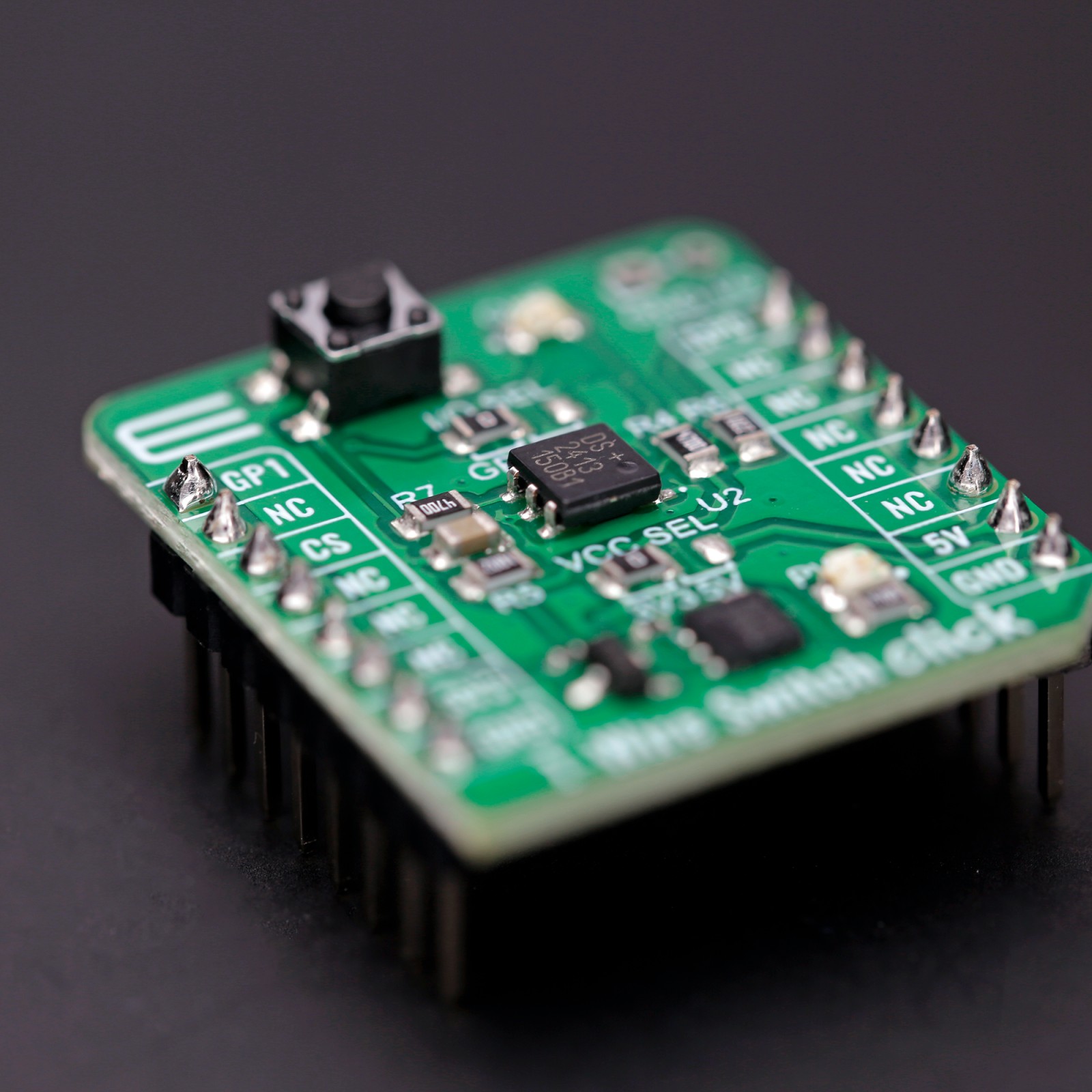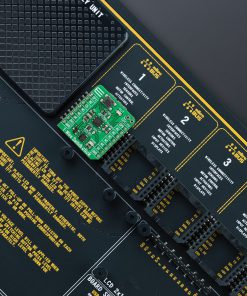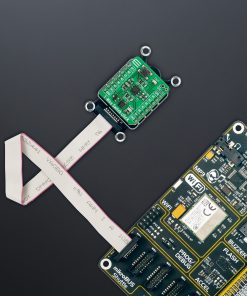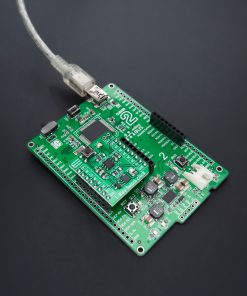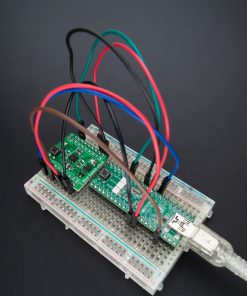1-Wire Switch Click is a compact add-on board that allows you to switch a device remotely using a 1-wire signal. This board features the DS2413, a dual-channel programmable I/O 1-Wire switch from Analog Devices. Communication and operation of this Click board™ are performed with the single 1-Wire serial interface, with the possibility of selecting signals for data processing. With the help of the button and the red LED, it is possible to give/detect I/O signals, and thanks to the additional I/O header, it is also possible to connect an additional external 1-Wire device. This Click board™ makes a perfect choice for industrial control, key-pick systems, accessory identification and control, and many more.
1-Wire Switch Click is fully compatible with the mikroBUS™ socket and can be used on any host system supporting the mikroBUS™ standard. It comes with the mikroSDK open-source libraries, offering unparalleled flexibility for evaluation and customization. What sets this Click board™ apart is the groundbreaking ClickID feature, enabling your host system to seamlessly and automatically detect and identify this add-on board.
 ccRF2 Click
1 × R800.00
ccRF2 Click
1 × R800.00  MP3 Click
1 × R485.00
MP3 Click
1 × R485.00  RS485 Click 5V
1 × R235.00
RS485 Click 5V
1 × R235.00  GPS Click
1 × R1,050.00
GPS Click
1 × R1,050.00  DAC Click
1 × R410.00
DAC Click
1 × R410.00  Proximity Click
1 × R220.00
Proximity Click
1 × R220.00 
